Data Structures and Algorithms
- Introduction to Data Structures and Algorithms
- Time and Space Complexity Analysis
- Big-O, Big-Theta, and Big-Omega Notations
- Recursion and Backtracking
- Divide and Conquer Algorithm
- Dynamic Programming: Memoization vs. Tabulation
- Greedy Algorithms and Their Use Cases
- Understanding Arrays: Types and Operations
- Linear Search vs. Binary Search
- Sorting Algorithms: Bubble, Insertion, Selection, and Merge Sort
- QuickSort: Explanation and Implementation
- Heap Sort and Its Applications
- Counting Sort, Radix Sort, and Bucket Sort
- Hashing Techniques: Hash Tables and Collisions
- Open Addressing vs. Separate Chaining in Hashing
- DSA Questions for Beginners
- Advanced DSA Questions for Competitive Programming
- Top 10 DSA Questions to Crack Your Next Coding Test
- Top 50 DSA Questions Every Programmer Should Practice
- Top Atlassian DSA Interview Questions
- Top Amazon DSA Interview Questions
- Top Microsoft DSA Interview Questions
- Top Meta (Facebook) DSA Interview Questions
- Netflix DSA Interview Questions and Preparation Guide
- Top 20 DSA Interview Questions You Need to Know
- Top Uber DSA Interview Questions and Solutions
- Google DSA Interview Questions and How to Prepare
- Airbnb DSA Interview Questions and How to Solve Them
- Mobile App DSA Interview Questions and Solutions
DSA Interview Questions
- DSA Questions for Beginners
- Advanced DSA Questions for Competitive Programming
- Top 10 DSA Questions to Crack Your Next Coding Test
- Top 50 DSA Questions Every Programmer Should Practice
- Top Atlassian DSA Interview Questions
- Top Amazon DSA Interview Questions
- Top Microsoft DSA Interview Questions
- Top Meta (Facebook) DSA Interview Questions
- Netflix DSA Interview Questions and Preparation Guide
- Top 20 DSA Interview Questions You Need to Know
- Top Uber DSA Interview Questions and Solutions
- Google DSA Interview Questions and How to Prepare
- Airbnb DSA Interview Questions and How to Solve Them
- Mobile App DSA Interview Questions and Solutions
Data Structures and Algorithms
- Introduction to Data Structures and Algorithms
- Time and Space Complexity Analysis
- Big-O, Big-Theta, and Big-Omega Notations
- Recursion and Backtracking
- Divide and Conquer Algorithm
- Dynamic Programming: Memoization vs. Tabulation
- Greedy Algorithms and Their Use Cases
- Understanding Arrays: Types and Operations
- Linear Search vs. Binary Search
- Sorting Algorithms: Bubble, Insertion, Selection, and Merge Sort
- QuickSort: Explanation and Implementation
- Heap Sort and Its Applications
- Counting Sort, Radix Sort, and Bucket Sort
- Hashing Techniques: Hash Tables and Collisions
- Open Addressing vs. Separate Chaining in Hashing
- DSA Questions for Beginners
- Advanced DSA Questions for Competitive Programming
- Top 10 DSA Questions to Crack Your Next Coding Test
- Top 50 DSA Questions Every Programmer Should Practice
- Top Atlassian DSA Interview Questions
- Top Amazon DSA Interview Questions
- Top Microsoft DSA Interview Questions
- Top Meta (Facebook) DSA Interview Questions
- Netflix DSA Interview Questions and Preparation Guide
- Top 20 DSA Interview Questions You Need to Know
- Top Uber DSA Interview Questions and Solutions
- Google DSA Interview Questions and How to Prepare
- Airbnb DSA Interview Questions and How to Solve Them
- Mobile App DSA Interview Questions and Solutions
DSA Interview Questions
- DSA Questions for Beginners
- Advanced DSA Questions for Competitive Programming
- Top 10 DSA Questions to Crack Your Next Coding Test
- Top 50 DSA Questions Every Programmer Should Practice
- Top Atlassian DSA Interview Questions
- Top Amazon DSA Interview Questions
- Top Microsoft DSA Interview Questions
- Top Meta (Facebook) DSA Interview Questions
- Netflix DSA Interview Questions and Preparation Guide
- Top 20 DSA Interview Questions You Need to Know
- Top Uber DSA Interview Questions and Solutions
- Google DSA Interview Questions and How to Prepare
- Airbnb DSA Interview Questions and How to Solve Them
- Mobile App DSA Interview Questions and Solutions
Webhooks vs. API Polling: A Comprehensive Guide with Examples
Introduction
In today’s fast-paced digital landscape, ensuring that applications stay up-to-date with the latest data is crucial for delivering seamless user experiences. Whether it’s processing payments in real-time, updating weather forecasts, or monitoring system health, developers need efficient ways to synchronize data between different systems. Two popular methods for achieving this are webhooks and API polling. Understanding the differences between these approaches is essential for making informed decisions in software development.
This comprehensive guide delves into the world of webhooks and API polling, providing clear definitions, explaining how they work, and highlighting their advantages and disadvantages. Through practical examples and implementation tips, you’ll gain the knowledge needed to choose the right method for your specific use case. Whether you’re a seasoned developer or just starting out, this article will equip you with the insights to optimize your data synchronization strategies.
Are you looking to enhance your skills in software development? Sign up for our free courses and stay updated with the latest trends and techniques. Sign up now to unlock a world of learning opportunities.
What is a Webhook?
A webhook is a powerful tool in the developer’s arsenal, allowing for real-time communication between applications. At its core, a webhook is a callback mechanism where one system (the server) sends data to another system (the client) immediately after a specific event occurs. This push-based approach contrasts with traditional pull-based methods like API polling, where the client must repeatedly request updates.
How Webhooks Work
The operation of a webhook involves several key steps:
- Registration: The client provides a unique URL (callback URL) to the server. This URL serves as the endpoint where the server will send data when an event is triggered.
- Event Trigger: When a predefined event occurs on the server—such as a user completing a purchase or a new file being uploaded—the server initiates an HTTP request (typically a POST request) to the registered callback URL.
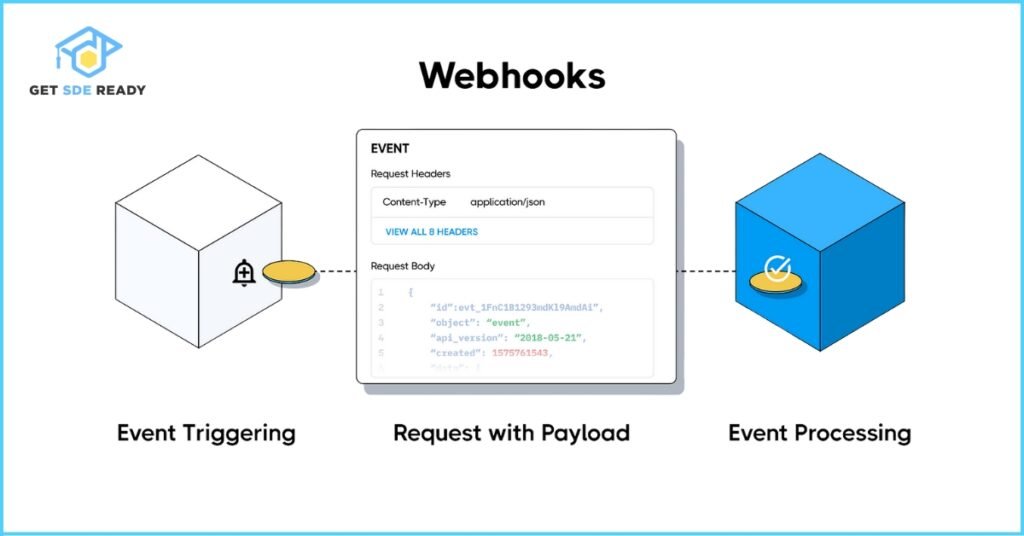
3. Data Delivery: The server includes the relevant data in the request payload, which the client can then process to update its state or trigger further actions.
For instance, in a continuous integration/continuous deployment (CI/CD) pipeline, when a developer pushes code to a GitHub repository, GitHub can be configured to send a webhook to a CI/CD tool like Jenkins. This triggers Jenkins to start the build process automatically, ensuring that the latest code is tested and deployed without manual intervention. To learn more about efficient algorithms for such systems, check out our DSA course.
Advantages of Webhooks
Webhooks offer several benefits that make them attractive for many applications:
- Real-Time Updates: Data is delivered instantly when an event occurs, which is crucial for time-sensitive operations such as payment processing or live notifications.
- Resource Efficiency: Since requests are only sent when there is new data, webhooks reduce unnecessary network traffic and server load. According to Zapier, only about 1.5% of polling requests typically find updates, underscoring the efficiency of webhooks.
- Scalability: Webhooks are particularly well-suited for applications with a large number of users or events, as they avoid the overhead associated with constant polling requests.
Disadvantages of Webhooks
Despite their advantages, webhooks also come with some challenges:
- Implementation Complexity: Setting up webhooks requires creating a secure, publicly accessible endpoint, which involves handling authentication, validating incoming requests, and managing potential errors.
- Reliability Issues: If the client’s server is down or the webhook request fails, data may be lost unless robust retry mechanisms are in place.
- Security Concerns: Since webhooks involve sending data to a public URL, there is a risk of unauthorized access. Developers must implement security measures such as HMAC signatures or tokens to verify the authenticity of requests.
What is API Polling?
API polling is another method for data synchronization, where the client periodically sends requests to the server’s API to check for new data or updates. This pull-based approach involves the client initiating HTTP requests at regular intervals, regardless of whether new data is available.
How API Polling Works
The polling process typically follows these steps:
- Scheduled Requests: The client sends HTTP GET requests to the server’s API at predefined intervals, such as every 5 or 10 minutes.
- Response Check: The server responds with any new data that has been generated since the last request or indicates that no updates are available.
- Data Processing: The client processes the response, updating its local state or performing actions based on the received data.
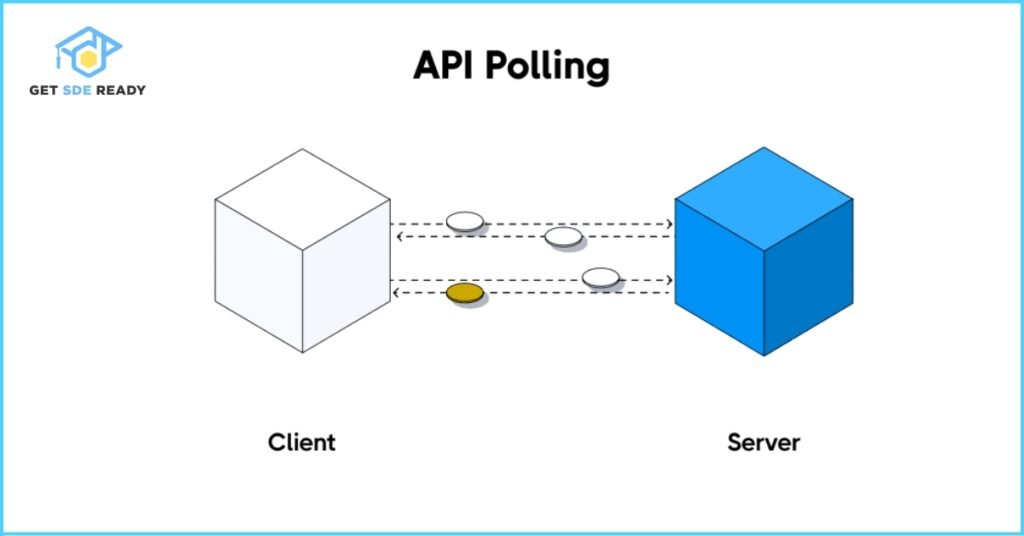
For example, a weather application might poll a weather API, such as OpenWeatherMap, every 15 minutes to fetch the latest forecast for a given location. Since weather data changes gradually, this periodic update schedule is sufficient for most users.
Advantages of API Polling
API polling has several advantages that make it a viable choice in certain scenarios:
- Simplicity: Implementing polling is straightforward, as it only requires scheduling regular API calls from the client side. It does not depend on the server supporting specific features like webhooks.
- Compatibility: Polling can be used with any API that provides data retrieval endpoints, making it a versatile option for systems that do not support webhooks.
- Control: Developers have full control over the frequency of polling requests, allowing them to adjust the interval based on the application’s specific needs.
Disadvantages of API Polling
However, API polling also has some drawbacks:
- Inefficient Resource Use: Polling generates a high number of requests, many of which may return no new data, leading to wasted bandwidth and increased server load. For instance, if an application polls an API every 5 seconds for 10,000 users, it could result in up to 10,000 requests per second, whereas webhooks might only require 150 responses per second for the same updates (Svix).
- Latency: Updates are only received during the next polling interval, which can introduce significant delays for time-sensitive applications.
- Scalability Issues: As the number of clients or the frequency of polling increases, the server may experience performance bottlenecks due to the high volume of requests.
Comparing Webhooks and API Polling
To help you understand the differences between webhooks and API polling more clearly, here’s a comparison table:
Aspect | Webhooks | API Polling |
Definition | Server sends data to client’s URL when an event occurs | Client repeatedly requests data from server at fixed intervals |
Data Delivery | Immediate, real-time when event occurs | Delayed, depends on polling interval |
Resource Efficiency | High, requests only when needed | Low, many requests return no new data |
Ease of Setup | Complex, requires secure endpoint configuration | Simple, just schedule API calls |
Control | Less control, server-driven | Full control, client-driven |
Reliability | Can miss updates if client is down (unless retries implemented) | Less likely to miss updates if server is available |
Scalability | Highly scalable, minimal server load | Less scalable, high server load with frequent polling |
Use Case | Real-time notifications, infrequent events (e.g., payment confirmations) | Frequent or predictable updates (e.g., weather data) |
When to Use Webhooks vs. API Polling
Choosing between webhooks and API polling depends on the specific requirements of your application. Here are some guidelines to help you decide:
- Use Webhooks When:
- Real-time updates are essential, such as for payment confirmations or live chat messages.
- Updates are infrequent, like new user registrations or code commits.
- Scalability is a key concern, as webhooks reduce server load compared to constant polling.
- Use API Polling When:
- Real-time updates are not critical, such as for weather updates or periodic system checks.
- The source system does not support webhooks, making polling a necessary alternative.
- You need control over the timing of updates, allowing you to define the exact frequency of checks.
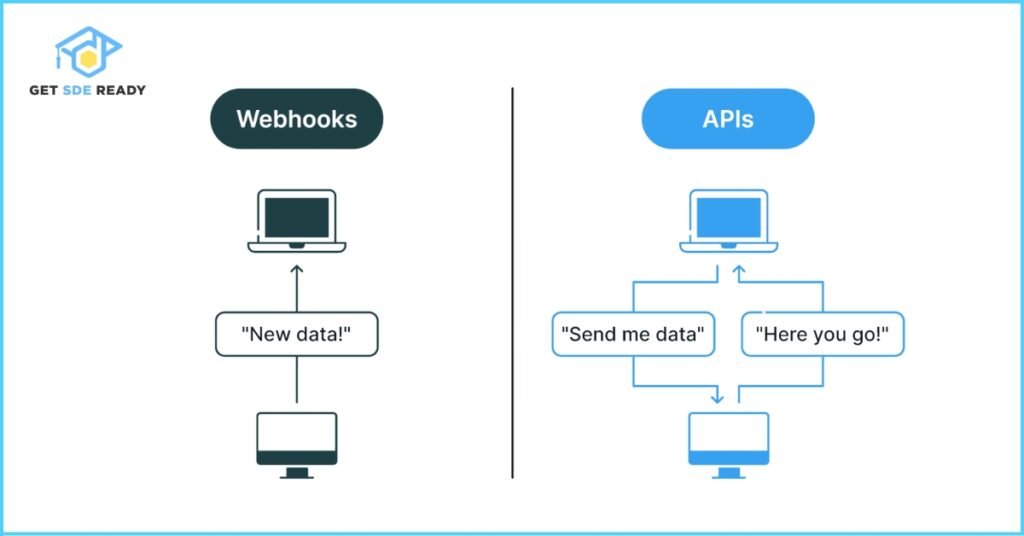
Real-Life Examples
To illustrate how webhooks and API polling are applied in practice, let’s explore some real-world scenarios:
Webhook Examples
- Payment Gateway Integration: When a customer completes a payment on an e-commerce site, a payment gateway like Stripe sends a webhook to the site’s server, instantly updating the order status to “Paid.” This allows the site to notify the customer and trigger fulfillment processes without delay.
- Real-Time Messaging: Applications like Slack use webhooks to send messages to channels when events occur, such as a new code commit in a repository or a deployment success in a CI/CD pipeline.
- Event-Driven Architectures: In microservices setups, webhooks can trigger actions across services. For example, when a user registers on a platform, a webhook might notify a marketing service to send a welcome email. Learn more about handling such data-driven systems in our data science course.
API Polling Examples
- Weather Updates: A weather app might poll a weather API, such as OpenWeatherMap, every 15 or 30 minutes to fetch the latest forecast. Since weather data changes gradually, polling at regular intervals is sufficient.
- System Status Monitoring: Monitoring tools like Nagios poll server endpoints at fixed intervals to check health and performance metrics, ensuring issues are detected within a reasonable timeframe.
- Social Media Monitoring: A social media management tool might poll APIs from platforms like Twitter or Facebook to retrieve new posts or updates from followed accounts. While not real-time, this approach works for non-urgent updates.
Hybrid Approach
In some cases, combining webhooks and API polling can provide the best of both worlds. For example, an e-commerce platform might use webhooks to receive instant notifications for completed orders but also implement polling every few hours to check for missed notifications due to webhook failures. This hybrid approach ensures both real-time responsiveness and reliability.
Implementing Webhooks and API Polling
To give you a practical sense of how to implement these methods, here are simplified code examples. For more in-depth coding skills, consider our web development course.
Webhook Implementation (Node.js)
const express = require('express');
const app = express();
app.use(express.json());
// Webhook endpoint to receive payment notifications
app.post('/webhook/payment', (req, res) => {
const event = req.body;
console.log('Received webhook:', event);
// Process the payment event (e.g., update order status)
res.status(200).send('Webhook received');
});
app.listen(3000, () => console.log('Webhook server running on port 3000'));
In this example, the server listens for POST requests at /webhook/payment, processes the incoming event data, and responds to acknowledge receipt.
API Polling Implementation (Python)
import requests
import time
def poll_weather_api():
url = "https://api.openweathermap.org/data/2.5/weather?q=London&appid=YOUR_API_KEY"
while True:
response = requests.get(url)
if response.status_code == 200:
data = response.json()
print("Weather update:", data)
else:
print("Failed to fetch data")
time.sleep(900) # Poll every 15 minutes
poll_weather_api()
This script polls a weather API every 15 minutes, retrieves the latest data, and processes it accordingly.
Best Practices
For Webhooks
- Secure your webhook endpoint with authentication mechanisms such as HMAC signatures or tokens to prevent unauthorized access.
- Implement retry logic to handle failed deliveries, ensuring that important events are not lost.
- Monitor webhook performance regularly to detect and resolve issues quickly, maintaining reliability.
For API Polling
- Optimize polling intervals to balance data freshness with resource usage, avoiding excessive requests.
- Use conditional requests, such as ETags or If-Modified-Since headers, to reduce unnecessary data transfers when no changes have occurred.
- Scale polling cautiously, considering the impact on server load as the number of clients or polling frequency increases.
Conclusion
Webhooks and API polling are both valuable tools for data synchronization in software development, each with its own set of strengths and weaknesses. Webhooks excel in providing real-time, event-driven updates with high efficiency, making them ideal for applications requiring instant notifications, such as payment processing or live messaging. On the other hand, API polling offers simplicity and compatibility, suitable for scenarios where real-time data is not critical, like weather updates or system monitoring.
By understanding the nuances of each method, developers can make informed decisions to choose the most appropriate approach for their specific use cases. Whether you opt for the immediacy of webhooks or the reliability of polling, ensuring efficient and effective data synchronization is key to building robust and responsive applications. To master these concepts and more, explore our master DSA, web dev, and system design course.
For further reading, check out resources like Svix’s Webhook Guide or Merge.dev’s comparison of Polling vs. Webhooks.

DSA, High & Low Level System Designs
- 85+ Live Classes & Recordings
- 24*7 Live Doubt Support
- 400+ DSA Practice Questions
- Comprehensive Notes
- HackerRank Tests & Quizzes
- Topic-wise Quizzes
- Case Studies
- Access to Global Peer Community
Buy for 52% OFF
₹25,000.00 ₹11,999.00
Accelerate your Path to a Product based Career
Boost your career or get hired at top product-based companies by joining our expertly crafted courses. Gain practical skills and real-world knowledge to help you succeed.
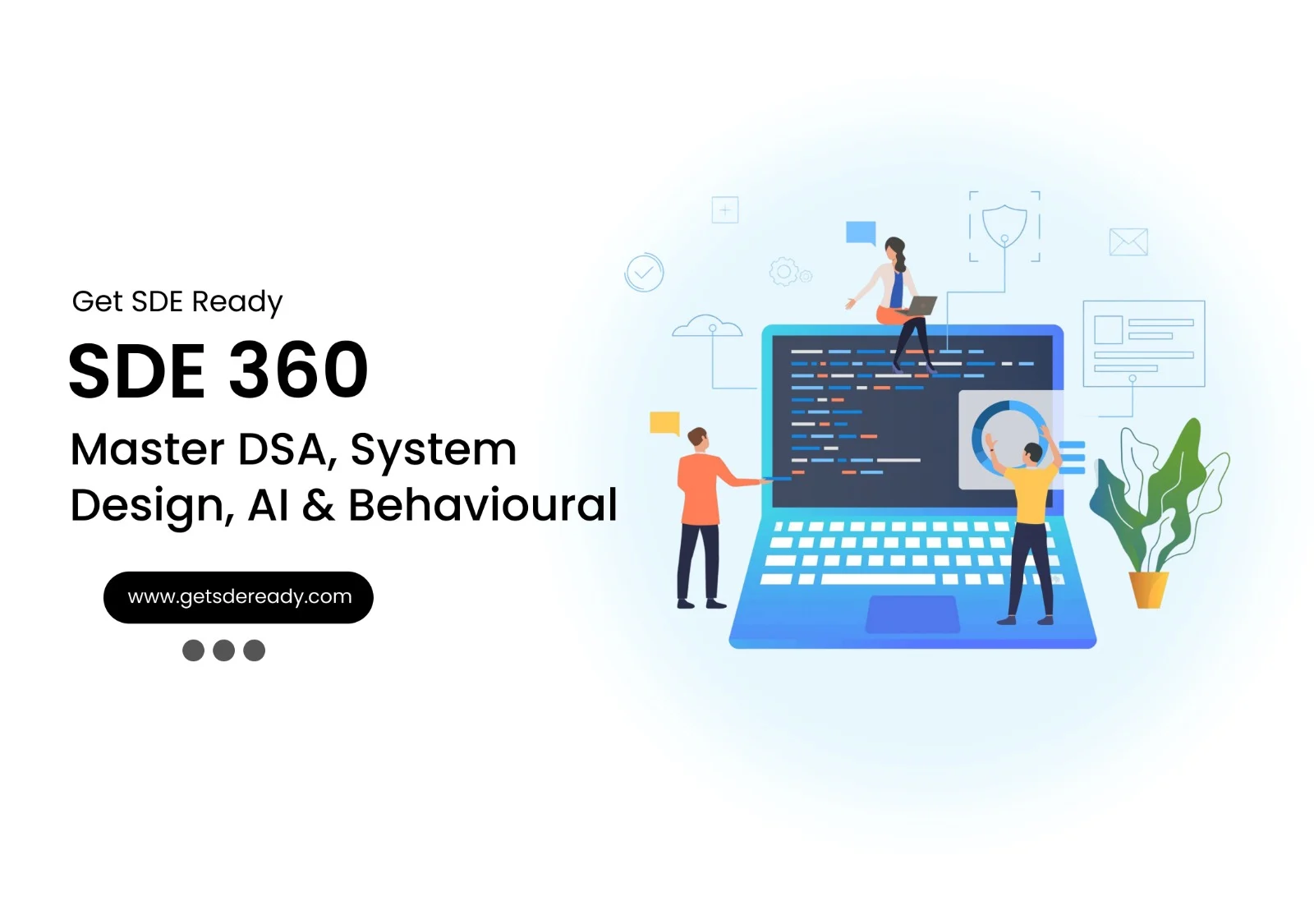
SDE 360: Master DSA, System Design, AI & Behavioural
- 100+ Live Classes & Recordings
- 24*7 Live Doubt Support
- 400+ DSA Practice Questions
- Comprehensive Notes
- HackerRank Tests & Quizzes
- Topic-wise Quizzes
- Case Studies
- Access to Global Peer Community
Buy for 50% OFF
₹39,999.00 ₹19,999.00

DSA, High & Low Level System Designs
- 85+ Live Classes & Recordings
- 24*7 Live Doubt Support
- 400+ DSA Practice Questions
- Comprehensive Notes
- HackerRank Tests & Quizzes
- Topic-wise Quizzes
- Case Studies
- Access to Global Peer Community
Buy for 52% OFF
₹25,000.00 ₹11,999.00
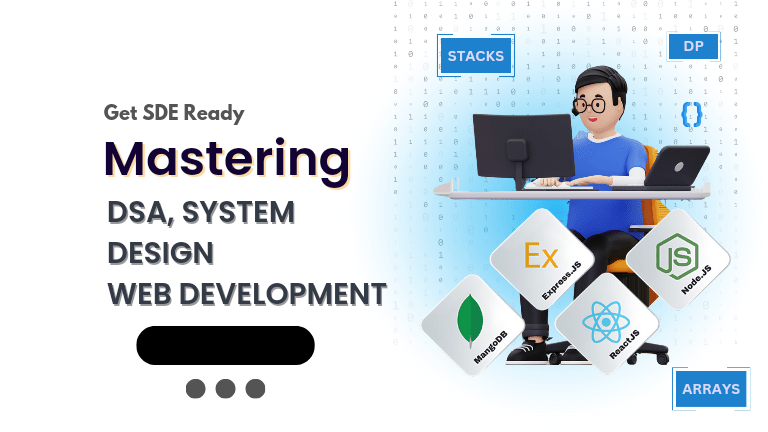
Fast-Track to Full Spectrum Software Engineering
- 120+ Live Classes & Recordings
- 24*7 Live Doubt Support
- 400+ DSA Practice Questions
- Comprehensive Notes
- HackerRank Tests & Quizzes
- 12+ live Projects & Deployments
- Case Studies
- Access to Global Peer Community
Buy for 51% OFF
₹35,000.00 ₹16,999.00

Low & High Level System Design
- 20+ Live Classes & Recordings
- 24*7 Live Doubt Support
- Case Studies
- Comprehensive Notes
- HackerRank Tests
- Topic-wise Quizzes
- Access to Global Peer Community
- Interview Prep Material
Buy for 60% OFF
₹20,000.00 ₹7,999.00
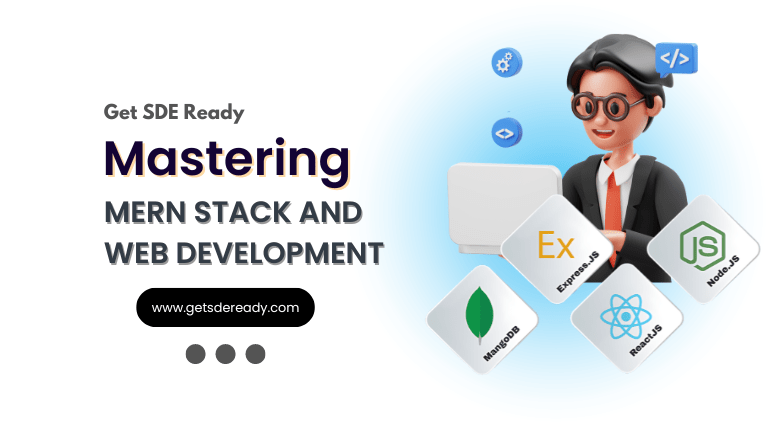
Mastering Mern Stack (WEB DEVELOPMENT)
- 65+ Live Classes & Recordings
- 24*7 Live Doubt Support
- 12+ Hands-on Live Projects & Deployments
- Comprehensive Notes & Quizzes
- Real-world Tools & Technologies
- Access to Global Peer Community
- Interview Prep Material
- Placement Assistance
Buy for 53% OFF
₹15,000.00 ₹6,999.00
Reach Out Now
If you have any queries, please fill out this form. We will surely reach out to you.
Contact Email
Reach us at the following email address.
arun@getsdeready.com
Phone Number
You can reach us by phone as well.
+91-97737 28034
Our Location
Rohini, Sector-3, Delhi-110085
